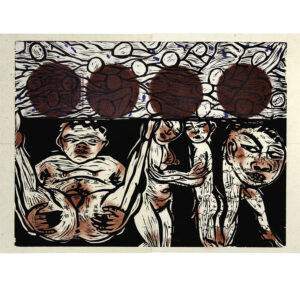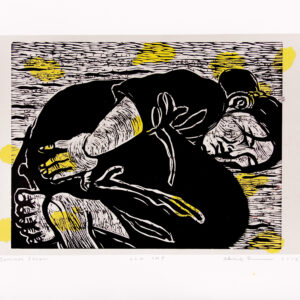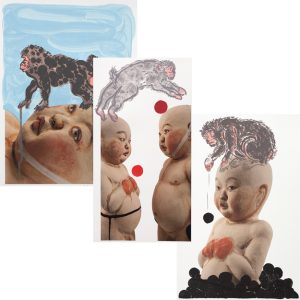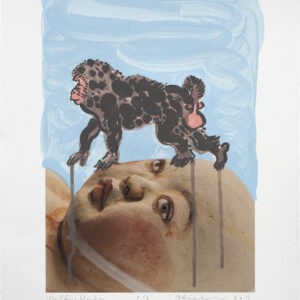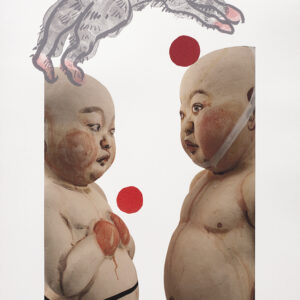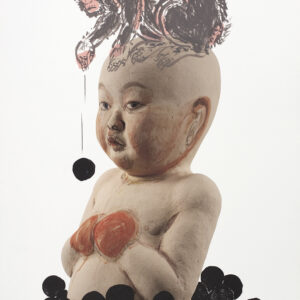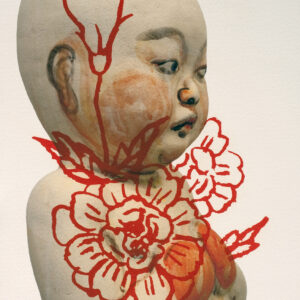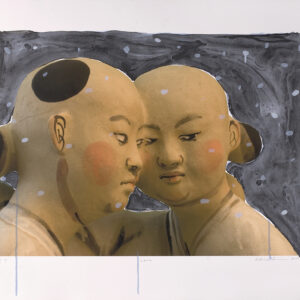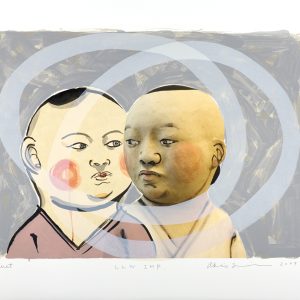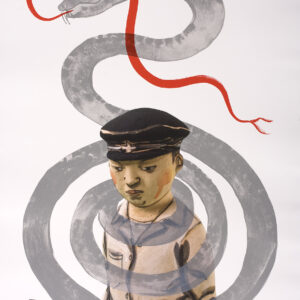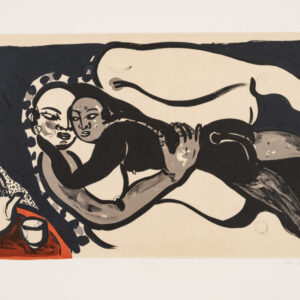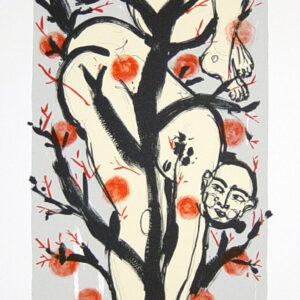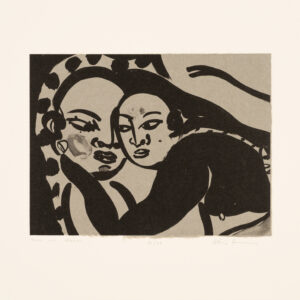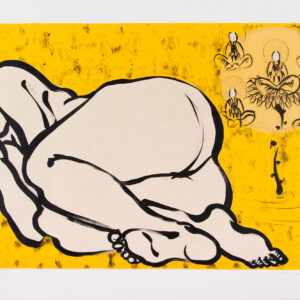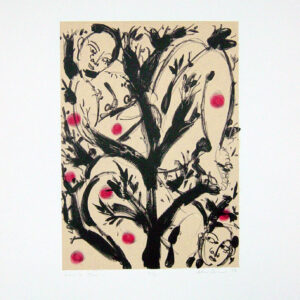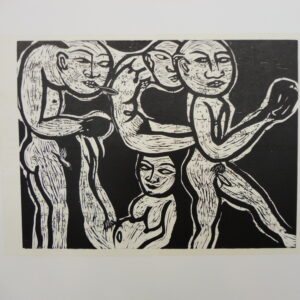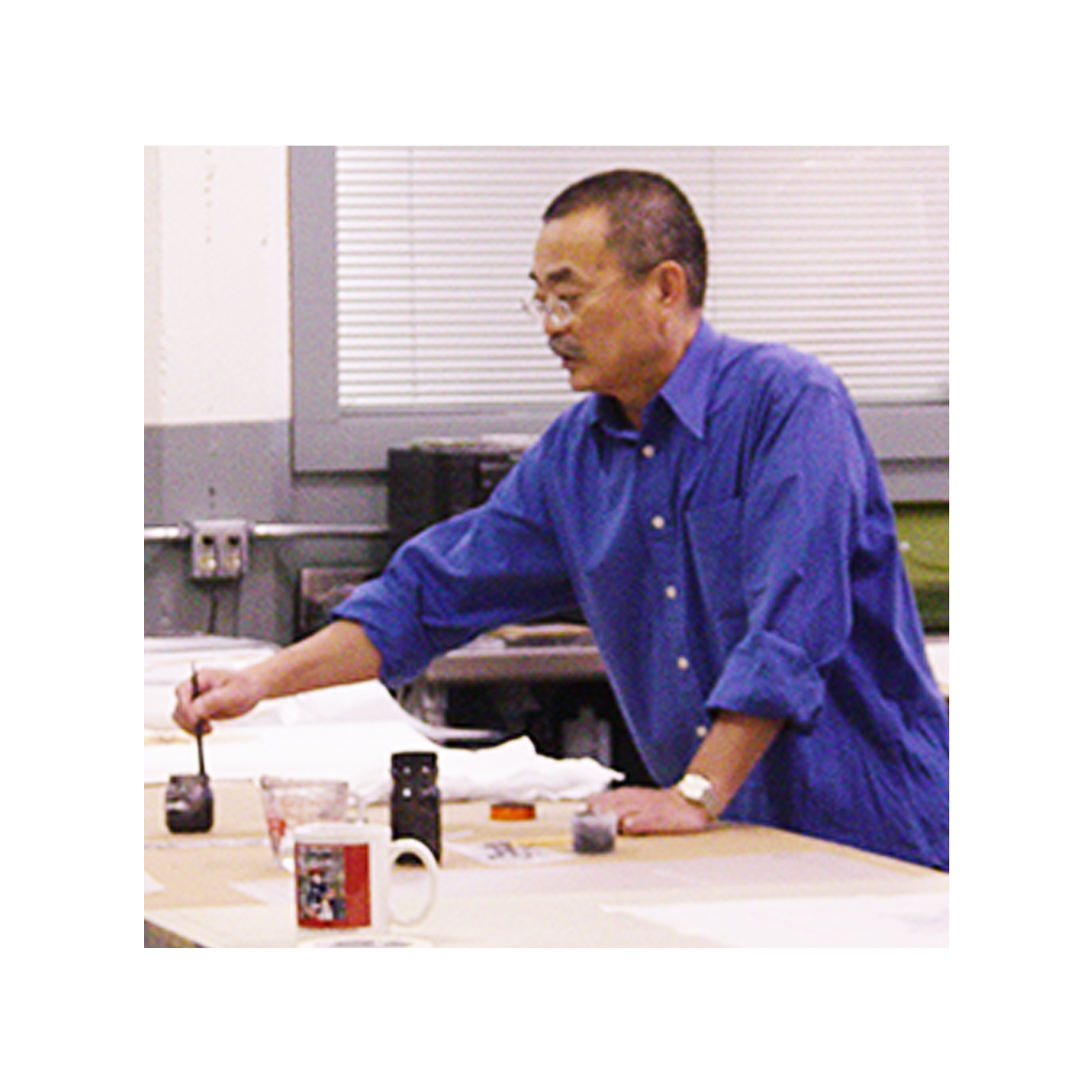Artist Statement
Western Paradise, 1996
“My own first erotic pieces were naïve, too romantic,” notes Takamori. Like many male artists, he idealized the female form, creating in his early work many images of what he calls “quiet joy.” These reclining women are pure objects of male desire: desire for the infinite pleasures of fleshly communion, desire for simple touch or even a return to the womb.
Sea Serpent, 2008
The statue of Laocoön and His Sons, also called the Laocoön Group, is a monumental marble sculpture now in the Vatican Museums, Rome. The statue is attributed by the Roman author Pliny the Elder to three sculptors from the island of Rhodes: Agesander, Athenodoros and Polydorus. It shows the Trojan priest Laocoön and his sons Antiphantes and Thymbraeus being strangled by sea serpents. (SOURCE: Wikipedia)
“The Laocoön Group and also El Greco’s painting Laocoön has been a favorite of mine for a long time. The image reminds me of the meaning of fatherhood and makes me think of my grandfather, father, my son and myself. Especially, I think of a young man who is in his coming of age and struggling to recognize the meaning of the manhood that will be ahead of him.
The Sea Serpent print came from one of the sculptures from the exhibition called “Children” in 2007. In this exhibition, I installed clay sculptures and enlarged their images, placing them face to face. The young man figure used in Sea Serpent is one of the sculptures from this exhibition.
I have been interested in defining information that come from two-dimensional and three-dimensional images. An enlarged detail digital image of a clay sculpture reveals materialness of the clay perhaps more than itself. I am interested in the process and transformations of the images that I create. It involves material as clay, firing process, surface drawings, transformation with digital photograph and then printmaking process. The human figures are center of my image making. I am interested in creating human conditions.”
Love, 2008
“I construct clay figure sculptures and then draw on the surfaces. The sculptures become the canvased for my drawings. I consider them as my three-dimensional drawings.
I understand that the nature of drawing is creating illusion, on the other hand the object/sculpture exists in real space.
I take digital images of my sculpture that changes the object into the illusion of the image. In other words, the image of the sculpture becomes a drawing on a paper. The digital images of my sculptures become the center image for the next process/printmaking. I am excited that each layer of the processes contributes a different reality into the artwork.
The original ceramic work that was used as the base images of the prints is titled LOVE. The sculpture was installed at the Harbourview Medical Center in Seattle.
The sky bridge separates the shallow niche by the hallway in the new building and the flat wall across from the elevators in the old building. The shallow niche is a stage or a framed space where the clay sculptures art installed. The four figures spell L, O, V, and E, something obvious for everybody, though they have a quiet existence, blending with the interior of the building that is warm and calm.”
Leaping Monkey, 2011
Sitting Monkey, 2011
Walking Monkey, 2011
“The innocent child feels anxiety and fear from the monkey on his head, though boy’s face projects his contemplative mind and isolated passive self. It is obvious that the monkey is not there to offer comfort to the child. Perhaps the monkey bears malice towards the child. The child realizes there is someone out there making his life difficult. Yet the world out there seems fascinating and curious.”
Summer Dream, 2012
“The sleepers represent people who are living their own life as calmly as possible amidst the hyper and absurd contemporary world. The sleepers engage into their own lives as they sleep. It is a quiet private time separate from the world, as sweet as a summer dream.”
WAR, 2013
“These happy and innocent people are together spelling the word war. They are unaware of the meaning of their actions. Each letter individual lacks meaning, but when gathered together to create a word, a new concept is formed.”
The figures in this combination woodcut/lithograph are derived from some of Takamori’s “Alphabet” series of ceramic figurines.
The background chine collé element is an actual page from an antique woodcut song book of chants or librettos for a Japanese NOH play published in 1919.
Honey Thief, 2016
“I admire Lucas Cranach the Elder’s paintings. I took inspiration from his series of Venus and Eros or Cupid paintings. In the painting, Eros is complaining to his mother Venus about bee stings while holding the stolen honeycomb in his hands. I like this provocative allegorical painting. Both Venus and Eros were symbols of erotic love, total freedom as immortals that had outrageously mischievous escapades. I took focus on Eros, the infant boy who induces the onlooker the presumption of his innocence as a novice to the world. In this lithograph Honey Thief, Eros is separated from his mother, he stands in the space on the paper like a fragment of a sculpture.”
– Akio Takamori, about Lucas Cranach the Elder, Cupid complaining to Venus,
c. 1526–27, National Gallery, London –
Honey Thief was the final print collaboration between TLLW and Akio Takamori. Always fond of Eastern and Western art history, this print emerged from a series of his study drawings exploring classical images of the goddess, Venus, and her alleged son, Cupid. Specifically, Akio was intrigued with the moral overtones found in the more than 25 Lucas Cranach the Elder’s paintings themed Cupid Complaining to Venus.
On the weekend of December 17, 2016, Mike Sims traveled to Seattle to visit with Akio and share with him the completed lithograph. The prints were signed in Akio’s studio during this visit. Less than a month later, on January 11, 2017, Akio Takamori died in his home, succumbing to cancer.
Akio Takamori was a favored friend, collaborator, and extraordinary artist. His friendship, sensitivity, and remarkable artistic vision were a gift to us all. He will be sadly missed, and always admired with gratitude and love here at TLLW.
“I learned a great deal from you, Akio. Rest in peace.”
– Mike Sims –

